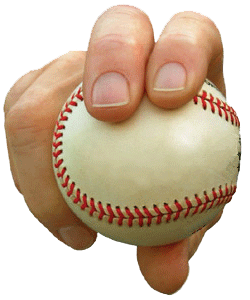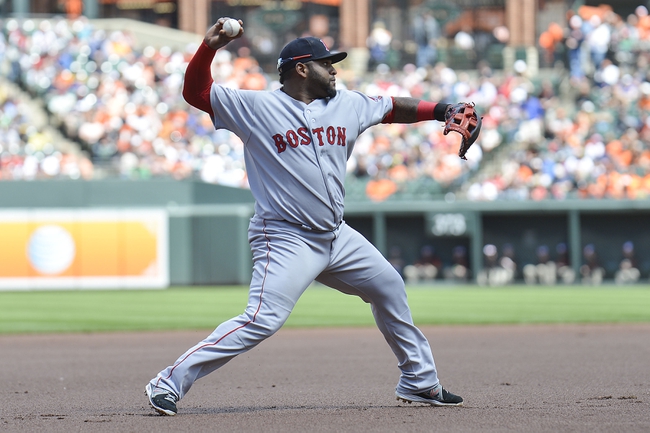
This note summarizes how to run a game and a good practice for a lower division
baseball team (5‐7 year olds), including drills, what to focus on in games, safety,
and general advice from the collective experience of generations of LMLL coaches.
Contents:
I. Running a Game: Things to Know
II. Running a Practice: Things to Know
III. A Sample Practice Plan
IV. Five Useful Practice Drills
V. Teaching The Four Main Baseball Skills
Teaching the Four Main Baseball Skills: Things to Know
1. Batting:
Four steps: Stance, Focus (eye on ball), Swing, Follow‐thru
Stance:
o Feet in straight line to pitcher, shoulder width apart
o Knees slightly bent
o Front foot even with side point of plate (to connect with ball
in front of the player).
o Front foot 3 steps (each the player’s shoe length) from plate.
o Check: A level bat swung with arms fully extended should
hit center of plate in widest part of bat. Kids tend to stand too
close to a tee, and too far from plate in coach pitch.
o Check foot placement after every swing. If stance is wrong,
the chance of a good hit is pretty much zilch.
o Recommendation: Mark a perpendicular ‘toe line’ and a
‘midline’ in the batter box dirt (use a stick if on grass, or
anything to mark it) that shows batter where to line up: Body
over ‘midline’, toes on ‘toe line’, so batter is in correct
position to hit ball near end of bat with arms fully extended.
How to hold the bat:
o Front hand goes below back hand in grip (remind ‘em!)
o Hands together, no space between them.
o Knuckles should be lined up (roughly is OK)
o Bat slightly off shoulder, mostly vertical. Do not wrap bat
around head or lay ‘flat’ – makes swing slow and inaccurate.
o Bat steady, no movement stance (‘wiggling’ the bat is for the
pros, to distract a pitcher. Not for little leaguers, ☺).
Focus.
o Tee Ball: Place ball on T with same position every time – e.g.,
a red letter E on Easton balls – facing straight back. Tell
batter: eyes on the (e.g.) red E on ball.
o All levels: Kids look away when batting, or blink as ball
approaches plate. Head stays down thru swing. Correct
every time if batter looks up early during swing.
o Teaching focus at coach pitch level: Put a black dime‐size dot on
half of the baseballs. After each pitch ask the batter if the ball
had a dot on it. When they report which do and which don’t consistently, they’ve got their focus down. Kids like this. Do
first without swings, then with swinging at the pitch.
Swing.
o Short step (the ‘stride’) with front foot. Back foot stays
planted.
o Swing down then level across.
o Arms fully extended (elbows almost locked) at point of ball
contact
o Head down, chin moves from touching front to back
shoulder
o Rotate hips ‘open’ to face pitcher
o Front leg locked (straight) at point of ball contact Follow‐thru.
o Swing hard thru ball, not just ‘to’ ball
o ‘Squash the bug’ with full 90‐degree turn of back foot. Back
toes still in place firmly on ground.
o Head down on plate, not looking up at pitcher or hit ball.
o Finish with hands between shoulder and top of head
o Check swing with three things in follow thru: Balance, two
hands on bat, head down facing plate.
2. Throwing:
The throwing habits/skills you teach a 5‐7 year old will stay with
him/her, and affect their lifelong play, more than anything else you
teach them.
Here are the essentials of good throwing:
The grip:
o Teach kids to grip the ball with fingers, instead of grabbing
the ball in the palm.
o Tee age: three fingers on top, spread out, pinky tucked on
side. Thumb on bottom.
o Bigger handed kids thru adults use first two fingers on top,
thumb on bottom. Proper mechanics of the throw:
o Body starts sideways to target
o Arms fully extended out in a ‘T’: front (gloved) hand points
at target, back (ball) hand straight back, thumb pointing
down
o Circular motion above shoulder to throw
o Throwing elbow should go above shoulder, arm in L‐shape at
apex of throw.
o Follow thru with whole body, arm comes across as body
turns. Back leg comes across front as weight shifts during
release.
o Eyes on target entire time.
Watch for:
o Side‐arm throwers. Intervene and correct this. Rotator cuff
injuries are ahead for a kid who releases to side of body (as
he/she gets older).
o ‘Low elbow’ throwers. Produces elbow injuries over time if
not corrected. Elbow goes above shoulder when throwing.
3. Catching:
Focus of catching training at 5‐7 year old level: Catch every ball with
two hands on glove in the center of body.
Glove position:
o Throw to kids at (their) chest height
o Teach players to catch with glove fingers pointing up or
sideways, and other hand on back of glove (to help squeeze
it). This shifts to one‐handed as their hand strength develops
age 8‐10, not before then.
o ‘Squeeze and freeze’: After (if!) the ball enters the glove,
squeeze with both hands and ‘freeze’ the hands
(momentarily) in place. Kids tend to ‘move’ hands when
catching, which makes the ball pop out. (Tell parents to
show how Ryan Howard catches at 1st base on television. His
glove is motionless at the point when he catches the ball).
For very early catchers:
o Start with two handed catches without a glove. If child can’t
catch a soft underhand toss from 5’ with two bare hands most
of the time, that eye‐hand coordination must be developed to
that level before a baseball glove will be helpful.
o Ask parents to work on this each week for 15 min (say, 2x
week) with their child. More is better. Catching comes with
(and only with) practice, practice, practice. For kids ‘scared of the ball’
o Kids may be ‘scared’ of incoming ball at any speed. This is
expected for balls at high speed. It is a problem to overcome
if exhibited for soft, easy tosses.
o Correct this early. Teach player: If scared, use glove to block
ball. The glove will stop the ball. Don’t hide from it – then
you can’t see where it is!
o Game to help overcome this: “Block the ball.” Toss soft
underhand throws to player’s chest from short distance (e.g.,
5 feet). Have the kid ‘whack’ (or ‘block’) the balls with
his/her closed glove before they hit/get past him. Turn it into
a game (they usually like this exercise). Repeat often, until
the player’s eyes follow the ball every time without turning
(averting) eyes or head. When they do this consistently
without exhibiting aversion to the incoming ball, then they
are ready to catch it with a glove. Then switch to ‘blocking
with glove open’ – i.e., catching it—instead of ‘blocking the
ball’.
About gloves:
o Should be rounded shape, not flat.
o Players age 5‐6 should have 9‐inch size gloves, never more
than a 10‐inch size. 7‐8 year olds will usually benefit from a
10‐inch glove. Size is written on the glove.
o Keep a ball in glove when not in use (maintains shape).
o Keep gloves in a cool, dry place.
4. Fielding Grounders
Basic mechanics:
o Field ball in front of and between legs
o Make a ‘triangle’ between two feet and glove
o Funnel ball with two hands into mid‐section (‘catch and
cover’)
o Come up ready to throw, feet in line with target.
General points:
o Teach kids to charge the ball if it is slow/rolling (but closest
person gets it!)
o Hopping balls are difficult. Teach by tossing one‐hoppers to
kids from 10 feet out. Requires a field not too uneven.
(Parents can teach this in a parking lot or on pavement
during the week, which helps and is easier to field)
o Fielding ground balls requires repetition. Teach with rolled
balls for long time before hitting to them kids.
Source & Full guide: http://www.myogrcc.org/wp-content/uploads/2015/03/Running-Lower-Division-Games-and-Practices.pdf










 “Practicing that in batting practice is helpful. You’re not going to be comfortable right away taking your eye off the ball, and if you’re going to fail, do it during BP. You do a lot of work before the game. You practice like you’re playing, because you play like you practice.”
“Practicing that in batting practice is helpful. You’re not going to be comfortable right away taking your eye off the ball, and if you’re going to fail, do it during BP. You do a lot of work before the game. You practice like you’re playing, because you play like you practice.”
